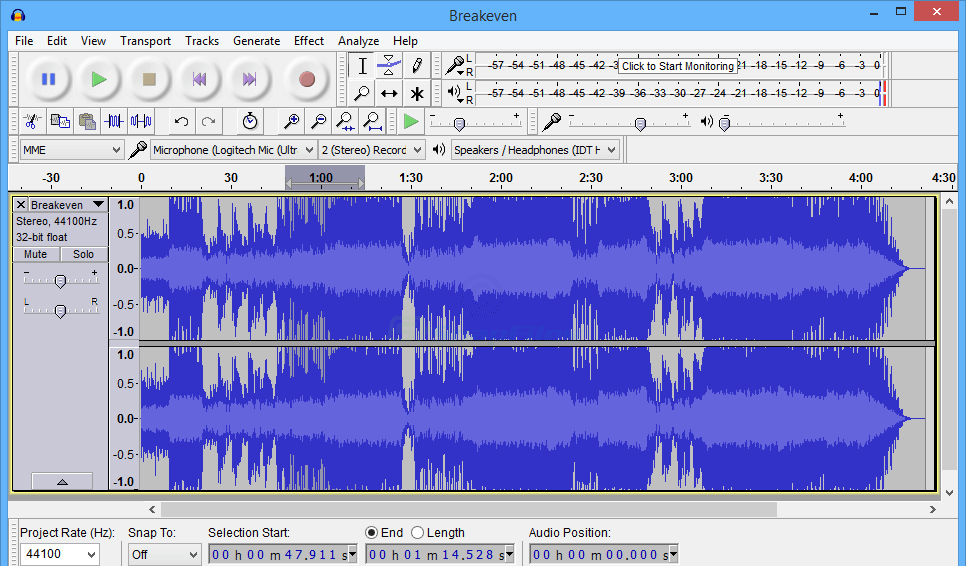

The difference between the two tracks is your Recording Latency Adjustment.Īudacity > Edit > Preferences > Devices > Latency: Track shift > OK.Īdjust that value by the number Audacity gave you when you compared the two metronome tracks. Jam your headphones against the microphone so the metronome gets recorded. Press record and your microphone should activate and push the sound into your headphones. Select the metronome track by clicking just right of the up arrow. Now go back to Audacity > Edit > Preferences > Recording and select Other tracks…Overdubbing > OK.īack to the timeline. Once you set up for overdubbing it’s killer difficult to start troubleshooting your sound system. To paraphrase the overdubbing tutorial, make darn sure you can make a plain recording perfectly before you start overdubbing.

If you’re on Windows make sure all your conferencing and voice processing is turned off. The quality of the sound is also much worse. I’m using a Behringer UM2, so my sound device is USB Audio CODEC for both. I don’t think you used to have to do that.Īnyway, make sure you have your device selected for both playback and record in the Audacity device toolbar. You can even apply a filter that erases the voice in a song.Īs if this wasn't enough, you can add all types of 32-bit external VST plugins, and also reproduce MIDI files.Needing to select the backing track did catch me off guard. Its power lays in the possibility of applying changes to any section of the audio file you want, and as well as its multi-track editing.

Thanks to the amount of available filters and effects, Audacity is much more versatile than it first seems.īesides all this, it allows you to adjust the level of noise on an audio track, modify the shape of the wave to adjust it to your needs, or add all kinds of post-process effects. It also includes all kinds of basic editing tools like cutting, copying, erasing. It supports the majority of audio formats, such as wav, mp3, Ogg, wma, ac3, flac and aiff. It is a free, open-source software with GNU licensing to record and edit audio, working directly with the graphics of the sound waves. There are many tools in this category, but few so comprehensive and efficient as Audacity.


 0 kommentar(er)
0 kommentar(er)
